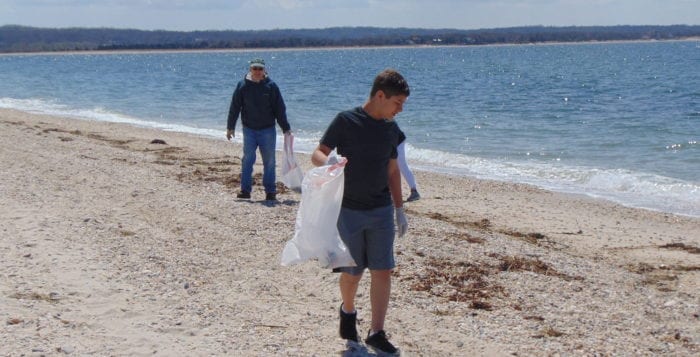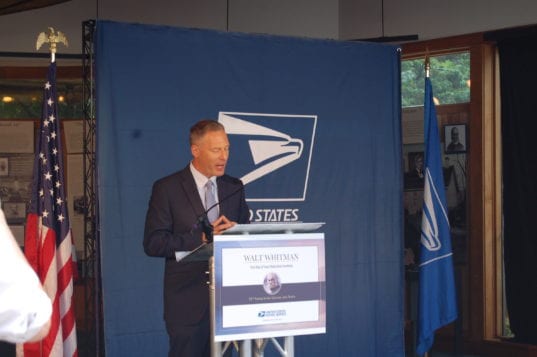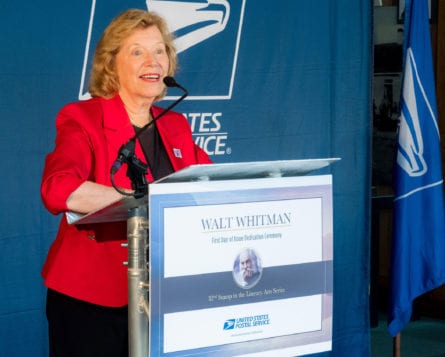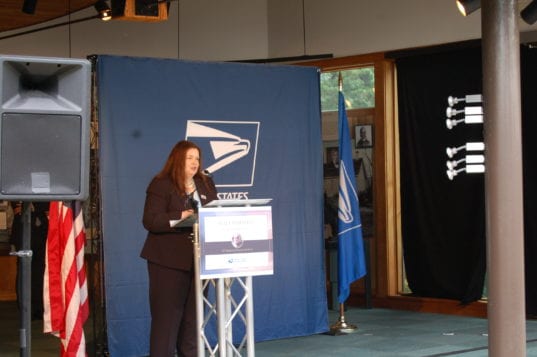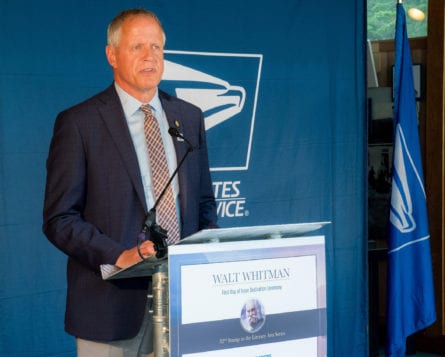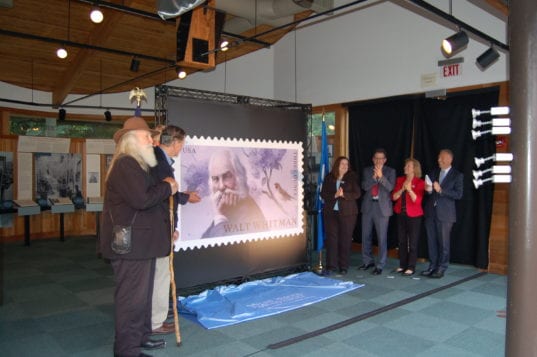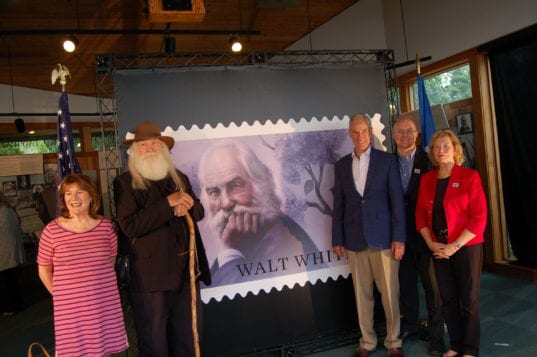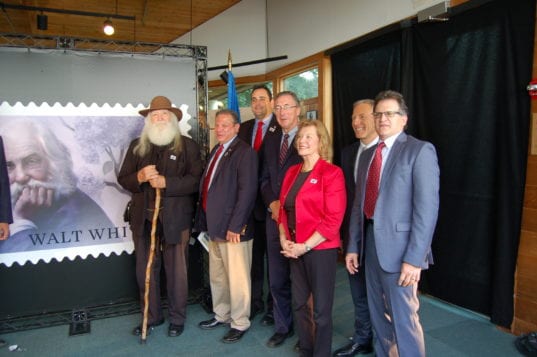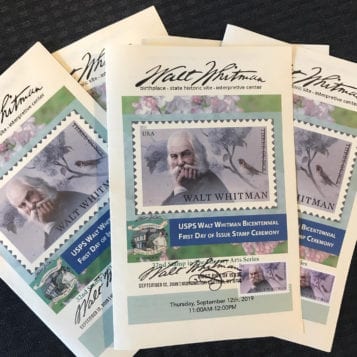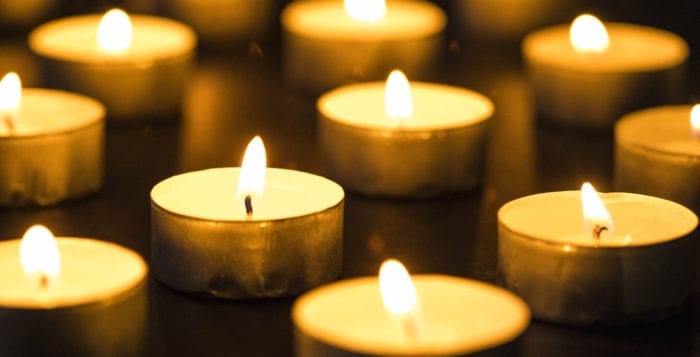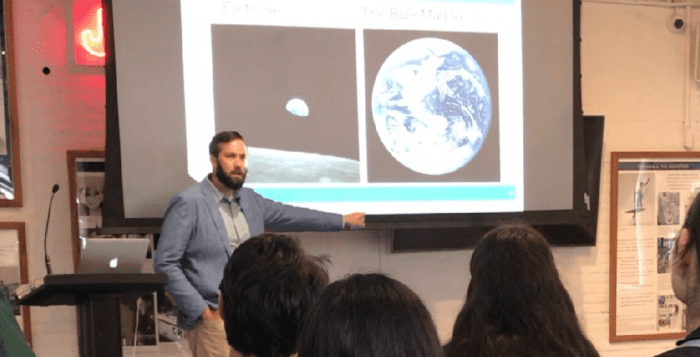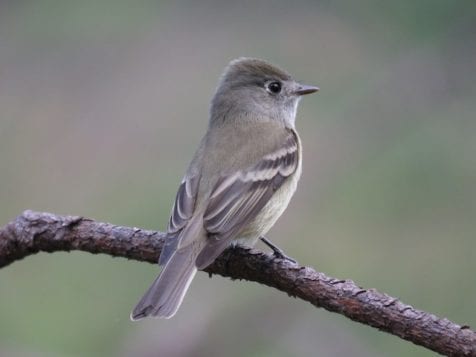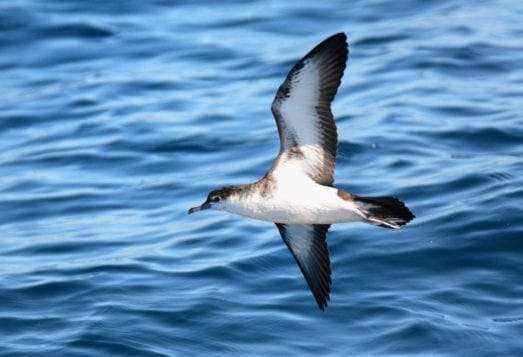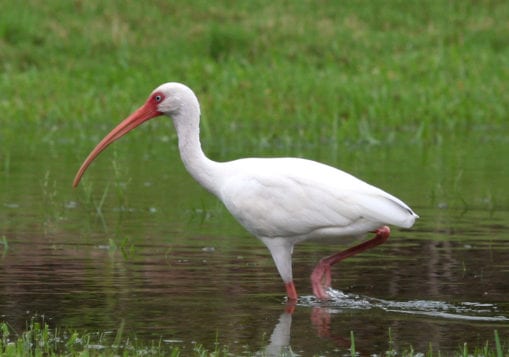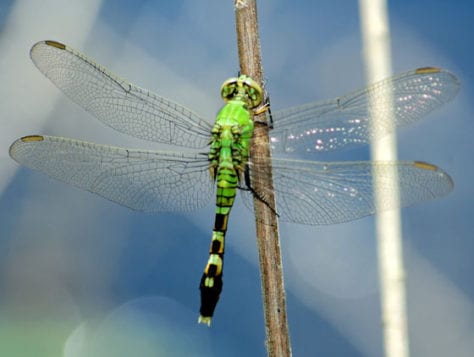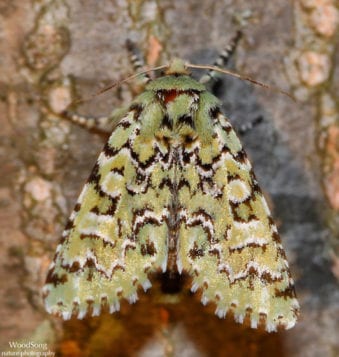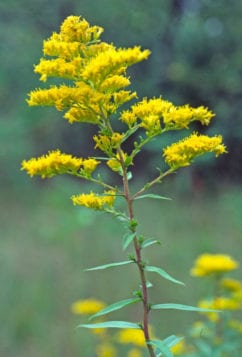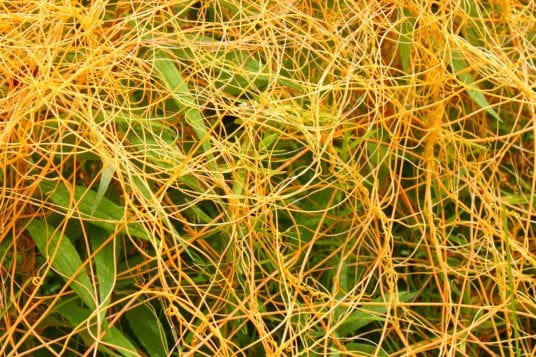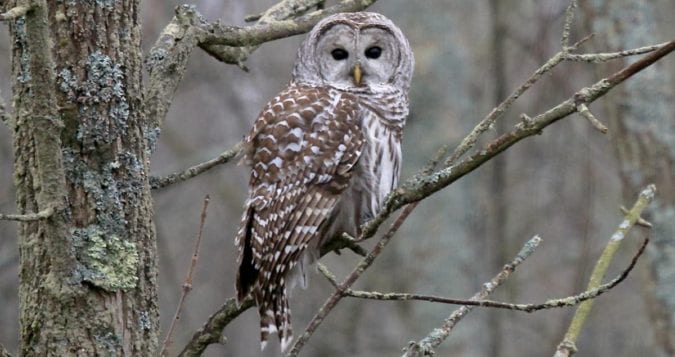It’s that time of year again. Join thousands of volunteers on Long Island for the Ocean Conservancy’s International Coastal Cleanup on Saturday, Sept. 21, a day to come together to pick up trash from coastlines and waterways to help marine life. Local cleanup sites include Wildwood State Park in Wading River, Caumsett State Historic Park in Huntington, Belle Terre, Kings Park and Sound Beach. To sign up for a location near you, visit www.oceanconservancy.org.
Yearly Archives: 2019
Melt Shop opens in Lake Grove
Melt Shop, known as the “pioneer of the Melted Sandwich Movement,” recently opened in the food court at Smith Haven Mall in Lake Grove. A soft opening was held on Sept. 7.
Founded in New York City in 2011, the restaurant’s menu includes grilled cheeses, chicken melts, burger melts, chicken tenders, salads, shakes and drinks. This is the brand’s 10th store in New York and 17th nationwide.
“Our brand has created a loyal following within our home state, and we’re excited to keep the momentum going,” Spencer Rubin, founder and CEO of Melt Shop, stated in a press release. “Our melted sandwiches have become a staple in the communities we serve and we can’t wait to expand Melt Shop’s unique culinary experience to Lake Grove.” For more information, call 631-236-9120.
Postal service unveils new stamp honoring Walt Whitman
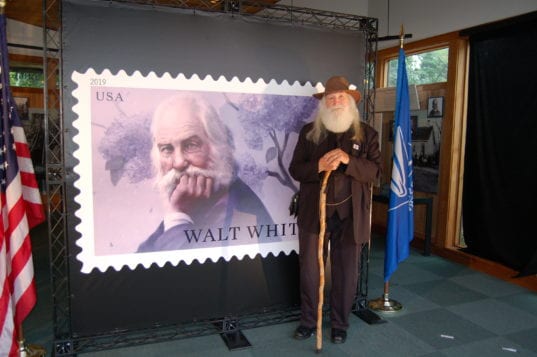
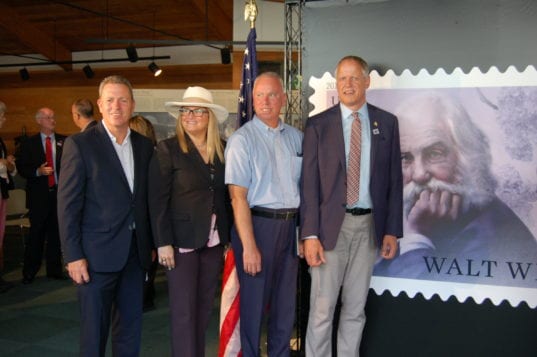

By Heidi Sutton
The U.S. Postal Service celebrated the 32nd honoree in the Literary Arts stamp series, Walt Whitman (1819-1892), with a first day of issue stamp dedication and unveiling ceremony on Sept. 12.
The event was held at a most fitting venue, The Walt Whitman Birthplace State Historic Site’s Interpretive Center in Huntington Station, which boasts the second largest Whitman collection in the world, only superceded by the Library of Congress. The farmhouse where Whitman was born sits on the property.
Thursday’s unveiling honored the 200th anniversary of the Long Island native’s birth.
Influenced by the works of Ralph Waldo Emerson, Whitman wrote over 400 poems including “Song of Myself,” “Crossing Brooklyn Ferry,” “I Sing the Body Electric,” and his 1855 masterpiece “Leaves of Grass.”
In addition to avid stamp collectors, the event was attended by many elected officials including Assemblyman Andrew Raia, Sen. James Gaughran, Legislator Susan Berland, Supervisor Chad Lupinacci, Legislator Tom Donnelly, Councilman Mark Cuthbertson along with Executive Director of the Suffolk County Vanderbilt Museum Lance Reinheimer, Huntington historian Robert C. Hughes, Executive Director of Planting Fields Arboretum State Historic Park Vincent A. Simeone, Deputy Regional Director of NYS Parks Brian X. Foley, Regional Director of NYS Parks George “Chip” Gorman and many employees of the U.S. Postal Service.
Michael Gargiulo, WNBC co-anchor of “Today in New York” served as master of ceremonies. “I’m a huge history fan, I’m a huge stamp fan and I’m thrilled to be here,” he said before introducing Cynthia L. Shor, executive director of the Walt Whitman Birthplace Association; Jeffrey S. Gould, who sits on the board of trustees of the association; and Erik Kulleseid, commissioner of the New York State Office of Parks, Recreation and Historic Preservation for welcoming remarks.
The official stamp dedication was led by Cara M. Greene, vice president and controller of the U.S. Postal Service, and Walt Whitman personator Darrel Blaine Ford treated the audience to a soul-stirring reading of “Song of the Open Road.”
“Walt Whitman’s message of equality, tolerance, and the idea that we are all of the natural world, not separate from it, drew international acclaim in the 19th century and rings just as true today,” said Kulleseid, who thanked Shor and the board of directors “for all you’ve done since the 1950s to preserve this site and to educate visitors about Whitman’s vision of what it truly means to be an American.”
“[Whitman] is considered by many as the father of modern American poetry. The key word here is modern because of the topics and themes he explored — freedom, human dignity and democracy — and his stylistic innovations that at times mimicked ordinary speech and the long cadences of biblical poetry. His work continues to resonate with us today,” said Greene before unveiling the 85-cent commemorative stamp, which is intended for domestic First-Class Mail weighing up to 3 ounces.
Designed by Greg Breeding, the stamp features a portrait of Whitman painted by Brooklyn artist Sam Weber based on a photograph of the poet taken by Frank Pearsall in 1869. It depicts Whitman in his 50s, with long white hair and a beard gazing out with his chin resting in his left hand. The light purple background with a hermit thrush siting on the branch of a lilac tree recalls “When Lilacs Last in the Door-yard Bloom’d,” an elegy for President Abraham Lincoln written by Whitman soon after Lincoln‘s assassination on April 14, 1865. It appeared in the second edition of “Drum Taps,” a collection of poems mostly written during the Civil War.
“Why do we honor Walt Whitman? He has had a tremendous influence on poetry, he relaxed the poetic line, dispensing with rhyme and meter and opening the way to what we call ‘free verse.’ He was really the great poet of American democracy — his poems embraced people of all religions and races and social classes,” at a time of great nativism, said David S. Reynolds, author of “Walt Whitman’s America: A Cultural Biography.”
Although he witnessed much suffering during the Civil War and endured several strokes, Reynolds said Whitman “never surrendered his optimism … His poetry radiates this joyful spirit. It brims with his love of the beauty and miracles of everyday life … and lifts our spirits.”
9/11 Responders remembered: A personal story

Out of the twisted wreckage of two collapsed New York City skyscrapers, Mark Gajewski helped erect one of the most significant 9/11 artifacts: the steel Ground Zero cross.
The symbol touched people beyond the many emergency responders who found it a source of comfort and divine inspiration. For Gajewski’s only daughter, Crystal, the 17-foot cross is one small part of her father’s legacy. As an operating engineer, he helped clear away the World Trade Center debris. He died 10 years later from a rare form of lung cancer at the age of 52.
“As I’ve gotten older, I’ve realized that it isn’t an artifact or special memento that makes a person a hero, but their innate intent to help others,” Crystal Gajewski said. “My father may not have received a medal and he will not appear in any textbooks, but to me and those that knew him best, he was one of the great unsung heroes.”
Gajewski rushed to the scene four hours after the towers fell, his daughter said, and was one of the first people to assess the situation.
“He worked six months straight without coming home at Ground Zero, nine months total,” she said.
At Ground Zero, Gajewski endured unthinkable trauma, both emotional and physical. He found human body parts in the rubble at the site, his daughter said, including the hands, bound at the wrist, of a flight attendant. And when he came down with strange ailments and coughing, his daughter said that doctors initially were perplexed. Because of his untimely death, the 9/11 cleanup worker never saw his son Sean graduate law school and become an attorney for the U.S. Coast Guard. He never got to meet his first grandchild, Mia.
Father Brian Jordan, from St. Francis Assisi church in New York City wants people to know that Mark Gajewski represents the thousands of union construction workers who completed the remarkable task of demolishing and removing the fallen building from the site.
“You hear about the dedication and the sacrifice of the fire fighters and police officers, but not the talented union construction workers: the operating engineers, the electricians, the welders, and others who performed an incredible task on time and under budget,” Jordan said. He also calls them unsung heroes.
Mark Gajewski’s name and the names of more than 1,200 other responders are engraved on a shiny, black granite wall in the 9/11 Responders Remembered Park on Smithtown Boulevard in Nesconset. This year, 206 more responders’ names were inscribed. Last year 163 names were added. So, the effects of 9/11 are still mounting. All of them, uniformed and nonuniformed have died of a 9/11-related illness. As the list grows, so does the crowd that attends the annual 9/11 Responders Remembered tribute. More than 500 people gathered on Sept. 14 for this year’s event.
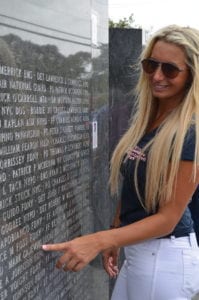
Nesconset resident John Feal, a 9/11 responder, served as demolition supervisor for the cleanup and had part of his foot amputated after a steel beam fell on it. The tireless advocate built the park with the help of others. He has said that he has been to more than 180 funerals for responders and wants to ensure that all the people who fell ill and lost their lives as a consequence of responding to the disaster are remembered for their sacrifices. “No Responder Left Behind” is his motto. The Nesconset park, he said, is unique because it’s inclusive. The names of responders who died are not excluded because of where they lived or what job title they held, or whether or not they wore uniforms.
So, as the tragedy continues to take its toll, Crystal Gajewski and her family and the many other volunteers remain dedicated to preserving the honor and dignity of her father and all the other people who ultimately sacrificed their lives as a result of cleaning up the aftermath of the 2001 terrorist attacks. She serves as volunteer vice president of the 9/11 Responders Remembered Park with John Feal and has created a separate foundation Ski’s Open Heart in her father’s honor.
Crystal said she hopes that her father’s story and the foundation she created for him inspires others to look within themselves and find time and the desire to help others.
Feature Photo by Crystal Gajewski
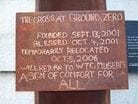

Northport girls lacrosse earn their state champ rings
The Northport High School varsity girls lacrosse team proudly flashed new hardware: their New York state championship rings Sept. 10.
Upon receiving their rings, the student-athletes reminisced with their teammates over a “dominating” season. Having earned second place to Middle Country with a record of 13-1 in the regular Division I season, the team qualified for playoffs in May.
In the opening round, the Tigers beat Commack, 15-5, and advanced to the semifinals where they beat Ward Melville, 13-7, to qualify for the Suffolk County championship.
Northport won, 13-7, against Middle Country to earn the county title and proceeded to beat Farmingdale, 15-4, for the Long Island championship. Hard on the heels of these victories, the team dominated over Pittsford, 13-3, in the New York state semifinals, and defeated Baldwinsville, 10-8, in June to win their first state championship since 2011. The Tigers overall record was 21-1.
“They dominated the competition,” Mark Dantuono, the district’s director of heath, physical education and athletics, said.
Congratulations to the entire team, as well as head coach Carol Rainson-Rose, assistant coach Alton Rose, and volunteer assistant coaches Alexis Curcio and Cortney Fortunato.
Obituaries for the week of 09/19
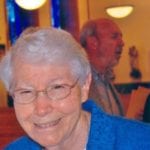 Sister Veronica McCormack
Sister Veronica McCormack
Sr. Veronica McCormack, born in Brooklyn and of the Daughters of Wisdom convent in Sound Beach passed Aug. 28. She was 86.
Services were held at Moloney’s Port Jefferson Station Funeral Home, while a funeral Mass was held at St. Louis De Montfort R.C. Church in Sound Beach. She was interred at the Holy Sepulchre Cemetery in Coram.
 Claire Chetuck
Claire Chetuck
Claire Anne Chetuck, of Mount Sinai, passed July 31. She was 93.
Born in Carle Place in the Town of Hempstead, she was the beloved wife of the late Leon. She was the devoted mother of Leon, Philip, Peter, Claire and the late Maria.
Services were held at Moloney’s Port Jefferson Station Funeral Home, with funeral Mass at Our Lady of Mount Carmel R.C. Church in North Patchogue. A cremation ceremony was privately held at Nassau Suffolk Crematory in Lake Ronkonkoma.
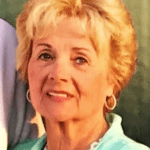 Eileen F. Dresch
Eileen F. Dresch
Eileen F. Dresch of Greenlawn died Sept. 9 at 74 years of age. Devoted wife of John; loving mother of Christina Kiernan and her husband Chris and Katie Joseph and her husband Jon; cherished grandma of Abby and Charlotte Joseph; fond sister of the late Tommy (Helen) Zorovich; also loved by her many nieces and nephews. Visitation was held at the Nolan Funeral Home, 5 Laurel Ave., Northport, Sept. 12. Funeral Mass was celebrated Sept. 13 at St. Philip Neri Church in Northport. Entombment was at St. Charles Cemetery. Donations in Eileen’s memory to St. Jude Children’s Research Hospital (www.stjude.org) are appreciated.
 Evelyn ‘Lyn’ Mugnola
Evelyn ‘Lyn’ Mugnola
Evelyn “Lyn” Mugnola of East Northport died Sept. 9 at 92 years of age. Beloved wife of the late Nick; loving mother of Lynn Lindstadt (Doody), Janet Swager (Ed) and Frank Mugnola (Janna); cherished grandmother of Francine, Robert, Madison, Lexi and Renee; adoring great-grandmother of Stephanie (C.J.), Kristina and Kimberly; dear great-great-grandmother of Mia. Visitation will be held at Nolan Funeral Home, 5 Laurel Ave., Northport, Friday, Sept. 20, 2 to 5 and 7 to 9 p.m. Funeral Mass will be celebrated Saturday, Sept. 21, at 10:30 a.m. at St. Philip Neri Church in Northport. Burial to follow at parish cemetery. In Lyn’s memory donations to St. Jude Children’s Research Hospital (www.stjude.org) or Cystic Fibrosis Foundation (www.cff.org) would be appreciated.
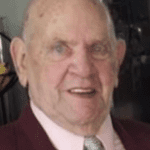 Robert J. Rieth
Robert J. Rieth
Robert J. Rieth, a 62-year resident of Northport, died Sept. 10 at the age of 90. He was a retired aerospace technician, who worked at Kollsman Instruments in Syosset, where he proudly helped build the guidance system for the Apollo Space Program. Rieth was a proud U.S. Army veteran and 60-year member of the Northport American Legion Post 694; loving husband for over 58 years to the late Lorraine Rieth; devoted father of Janet (Peter) Carbajal, Linda Farrell, Susan Rieth, Robert (Lisa) Rieth and Teresa (Robert) Robbins; beloved grandfather of Christa, Jennifer, Robert, Nicholas, Tyler, Thomas, Maxwell and Emily; cherished by his 10 great-grandchildren. Reposing was held Sept. 12 and 13 at Nolan Funeral Home, 5 Laurel Ave., Northport. Funeral Mass was celebrated Sept. 14 at St. Anthony of Padua Church, East Northport. Interment, with U.S. Army military honors, was held at St. Charles Cemetery in Farmingdale.
Medical Compass: Reducing the risks of abdominal aortic aneurysms
Inflammation and oxidative stress may play a role
By David Dunaief, M.D.
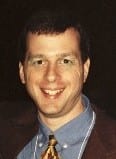
Aneurysms are universally feared; they can be lethal, and most times they have no symptoms. There are numerous types of aneurysms, most of which are named by their location of occurrence, including abdominal, thoracic and cerebral (brain). In this article, I will discuss abdominal aortic aneurysms, better known as a “triple-A,” or AAA. Preventing any type of aneurysm should be a priority.
What is an AAA? It is an increase in the diameter of the walls of the aorta in one area, in this case, the abdomen. The aorta is the “water main” for supplying blood to the rest of the body from the heart. Abnormal enlargement weakens the walls and increases the risk that it may rupture. If the aorta ruptures, it causes massive hemorrhaging, or bleeding, and creates a substantial likelihood of death.
The exact incidence of aneurysms is difficult to quantify, since some people may die due to its rupture without having an autopsy; however, estimates suggest that they occur in 4 to 9 percent of the population (1). Fortunately, there are possible interventions if they are caught before they rupture.
The cause of AAA is not known, but it is thought that inflammation and oxidative stress play an important role in weakening smooth muscle in the aorta (2).
People who are at highest risk for aneurysms are those over age 60 (3). Other risk factors include atherosclerosis, or hardened arteries, high blood pressure, race (Caucasian), gender (male), family history, smoking and having a history of aneurysms in other arteries (4). Some of these risk factors are modifiable, such as atherosclerosis, high blood pressure and smoking.
Men are more than four times more likely to have an AAA (5). Though males are at a higher risk, women are at a higher risk of having an AAA rupture (6).
Is it important to get screened?
Yes, it is important, especially if you have risk factors. Although some people do experience nondescript symptoms, such as pain in the abdomen, back or flank pain, the majority of cases are asymptomatic (4). A smaller AAA is less likely to rupture and can be monitored closely with noninvasive diagnostic tools, such as ultrasound and CT scan.
Sometimes cost is a question when it comes to screening, but one study showed unequivocally that screening ultimately reduces cost, because of the number of aneurysms that are identified and potentially prevented from rupturing (7).
What are the treatments?
There are no specific medications that prevent or treat abdominal aortic aneurysms directly. Medications for treating risk factors, such as high blood pressure, have no direct impact on an aneurysm’s size or progression. But the mainstay of treatment is surgery to prevent rupture.
When to watch and wait and when to treat is a difficult question; surgery is not without its complications, and risk of death is higher than many other surgeries. AAA size is the most important factor. In women, AAAs over 5.0 cm may need immediate treatment, while in men, those over 5.5 cm may need immediate treatment (8). Smaller AAAs, however, are trickier.
The growth rate is important, so patients with this type of aneurysm should have an ultrasound or CT scan every six to 12 months. If you have an aneurysm, have a discussion with your physician about this.
Lifestyle changes
One of the most powerful tools against AAA is prevention; it avoids the difficult decision of how to best avoid rupture and the complications of surgery itself. Lifestyle changes are a must. They don’t typically have dangerous side effects, but rather potential side benefits. These lifestyle changes include smoking cessation, exercise and dietary changes.
Smoking cessation
Smoking has the greatest impact because it directly impacts the occurrence and size of an AAA. It increases risk of medium-to-large size aneurysms by at least fivefold. One study found that smoking was responsible for 78 percent of aortic aneurysms larger than 4 cm (9). Remember, size does matter in terms of rupture risk. So, for those who smoke, this is a wake-up call.
Impact of fruit
A simple lifestyle modification with significant impact is increasing your fruit intake. The results of two prospective (forward-looking) study populations, Cohort of Swedish Men and the Swedish Mammography Cohort Study, showed that consumption of greater than two servings of fruit a day decreased the risk of an AAA by 25 percent (10). If you do have an AAA, this same amount of fruit also decreased the risk of AAA rupture by 43 percent. This study involved over 80,000 men and women, ages 46 to 84, with a follow-up of 13 years.
The authors believe that fruit’s impact may have to do with its antioxidant properties; it may reduce the oxidative stress that can cause these types of aneurysms. Remember, the quandary has been when the benefit of surgery outweighs the risks, in terms of preventing rupture. This modest amount of fruit on a daily basis may help alleviate this quandary.
So, what have we learned? Screening for AAA may be very important, especially as we age and if we have a family history. To reduce your risk, lifestyle changes, including smoking cessation and increased fruit intake, are no-brainers.
References:
(1) Ann Intern Med. 2001;134(3):182. (2) Arterioscler Thromb Vasc Biol. 2007;27:461–469. (3) J Vasc Surg. 1999;30(6):1099. (4) uptodate.com. (5) Arch Intern Med. 2000;160(10):1425. (6) J Vasc Surg. 2006;43(2):230. (7) 2012 BMJ Publishing Group. (8) Lancet. 1998;352(9141):1649. (9) Ann Intern Med. 1997;126(6):441. (10) Circulation. 2013;128:795-802.
Dr. Dunaief is a speaker, author and local lifestyle medicine physician focusing on the integration of medicine, nutrition, fitness and stress management. For further information, visit www.medicalcompassmd.com or consult your personal physician.
Attorney At Law: Further estate planning after the death of a spouse

By Nancy Burner, Esq.
Losing a spouse is an extremely difficult time in life and handling the administration of their estate can be a stressful experience. When you are ready, it is important to seek the advice of an estate planning and elder law attorney to discuss what needs to be done on behalf of your spouse’s estate and also what planning you need to do for your own estate.
Your attorney will want to review all assets held by your spouse, whether individually or jointly with you, and all assets in your name. It is also important to review any previous estate planning documents you may have in place, such as last will and testaments, trusts, powers of attorney and health care directives. A thorough review of the assets and estate planning documents will help your attorney advise you on what additional planning, if any, needs to be done.
If your spouse was the owner of an IRA or other tax deferred retirement account, you are likely named as the primary beneficiary on the account. You will want to ensure that you roll over this account into an IRA account in your name. It will also be necessary for you to put your sole name on any accounts that are held jointly with you and your spouse or that name you as transfer on death beneficiary.
Furthermore, it is important you update the beneficiaries under these accounts where appropriate, especially if your spouse was previously listed as your primary beneficiary.
You will need to go through a court process to gain control of assets held in your spouse’s sole name without a beneficiary. The court proceeding is called “probate” if your spouse had a last will and testament or “administration” if your spouse died without a last will and testament. New York State law provides a scheme for the distribution of assets in the case of a person that did not execute a last will and testament.
If your spouse had children, you and the children will share in the assets of the administration estate. There are also certain rights that a surviving spouse has to assets of the estate about which your attorney can advise you.
Lastly, a review of your current estate planning documents will help determine if updates to your plan are required. For example, you will likely need to change your agents listed under your power of attorney and health care proxy if each document listed your spouse as agent.
Additional changes to your will and/or trust may be required if there are changes to the tax law, your family structure or personal health status, such as a need for long-term care.
Nancy Burner, Esq. practices elder law and estate planning from her East Setauket office.
SBU hurricane expert Kevin Reed discusses Dorian
By Daniel Dunaief
Hurricane Dorian has dominated the news cycle for weeks, as its violent winds, torrential rains and storm surge caused extensive damage throughout the Bahamas and brought flooding and tornadoes to North Carolina.
For Kevin Reed, an assistant professor at Stony Brook University’s School of Marine and Atmospheric Sciences who models extreme weather events including hurricanes, Dorian followed patterns the climate scientist anticipates will continue to develop in future years.
“Two things that are current with Dorian are consistent with what we’d expect from a changing climate,” said Reed. Dorian became a Category 5 storm, which is the strongest on the Saffir-Simpson Hurricane Wind Scale. Second, the hurricane slowed down, which was also a trend that Hurricanes Harvey and Florence demonstrated.
The reason a warming climate would slow a hurricane like Dorian is that the polar regions are warming more rapidly than the tropics. That can have a “huge impact on the overall circulation” within the atmosphere, Reed said.
Indeed, what controls the speed of the jet stream, which moves hurricanes and other storm systems along over the rotating planet, is the difference in the temperature between the tropics and the poles. When the poles warm up more rapidly than the tropics, the circulation in the atmosphere can slow down and that can reduce the speed of the wind that blows the hurricane.
“Hurricanes are impacted by climate” and any change in that dynamic will have an effect on storms that can and do present a threat to the homes, businesses and lives of people in their path, Reed said.
Basic research has enhanced and improved the ability of forecasters to predict where a storm like Dorian will go, allowing meteorologists and the National Hurricane Center to provide warnings to political leaders and emergency response teams.
“Our general understanding of why storms move and go where they do has improved significantly over the last few decades,” Reed said. “Part of that can be seen in the forecast.”
Most of these forecasts are informed by numerical models. That is where Reed brings his expertise to hurricane science.
“I am a numerical modeler,” he said. “I use and help develop models to understand tropical cyclones and precipitation in general.”
Using information often taken from satellites, from in situ observations, radar along the coastlines and aircraft that fly every few hours into a storm, especially when they threaten the Caribbean or the East Coast, forecasters have had a “steady improvement in these models.”
Reed likens the process of predicting the weather or tracking a hurricane to choosing a stock. As investors and companies have become more sophisticated in the way they analyze the market or individual companies, their algorithms improve.
Investors have “added more variables” to choose companies for their investments, while forecasters have added more information from enhanced observations.
As for the ongoing coverage of hurricanes, Reed said the general population seems to have a relatively good awareness of the path and destructive power of the storms. The one area, however, that may help people focus on the potential danger from a storm comes from the way people describe these hurricanes.
Often, media outlets focus on the speed on the wind. While the wind can and does topple trees, causes property damage and disrupts power supplies, much of the damage comes from the storm surge. Rising water levels, however, is often the reason state and national officials encourage people to evacuate from their homes.
“Whether a storm is a Category 2 or a Category 3 doesn’t take into account the size of the storm,” Reed said. Hurricanes can range in size fairly dramatically. Hurricane Sandy was not even a hurricane when it made landfall, but it was so big and it impacted a much wider area that it had a much larger storm surge.
After a storm blows off into the ocean or dissipates, the scientific community then spends considerable time learning the lessons from the storm.
In the case of Dorian, researchers will explore why models initially predicted a landfall in Florida as a Category 4 storm. They will look at what happened to slow it down, which will inform future versions of forecasts for other storms.
In the future, Reed hopes researchers enhance their ability to represent convective processes in the models. These involve the formation of clouds and rain, especially in the context of a storm.
“That’s something that’s constantly been a difficulty,” he said. “It’s a complex process. While we have theories to understand it, we are always improving our ways to model it.”
In the next 10 years, researchers will move past the point of trying to estimate convection and will get to the point where they run models that explicitly resolve convection, which eliminates the need to estimate it.
Reed believes investing in fundamental research is “crucial. The return on investment to society and to the country is one of the best investments you can make. We have shown that through a steady improvement in the hurricane track,” which came about because of fundamental research. “The only way to continue that improvement is through basic and applied research that leads to these outcomes.”
A native of Waterford, Michigan, which is about 45 minutes away from Detroit, Reed didn’t have any firsthand experiences with hurricanes when he was growing up. Rather than watching MTV the way his friends did, he would watch hurricane updates or tropical storm updates.
A resident of Queens, Reed enjoys traveling and has a self-described “unhealthy” commitment to the University of Michigan football team. He purchases season tickets each year and takes 6 a.m. flights from LaGuardia to Michigan, where an Uber brings him to his fellow tailgaters before home games.
As for future hurricanes, Reed said the current consensus is that they will be lower in number but higher in intensity. Hurricane forecasts expect “more intense precipitation, but less frequent” storms, he said.
Your Turn: Colorful common names
By John Turner
This article is devoted to wood pewees everywhere.
The species names spill off the tongue quickly — “Oh, that’s a pink lady’s slipper … or a green darner … or a round-leaved sundew or great-crested flycatcher. Perhaps its a brook trout … or eastern chipmunk or a diamondback terrapin.” These names, and hundreds of thousands of others, are the scientifically established common names for these creatures, useful because they help to establish order, definition and identity. After all, we humans like to give every living thing a name as a means to begin to understand it and by so doing, legitimize its existence.
But these common names are almost always stated matter of factly, as if they are nothing more than dry words with nothing behind them. There’s no appreciation for the fascinating information these names convey, no thought about the creative and colorful descriptors they contain, illuminating some interesting aspect of the species. We say “diamondback terrapin” but fail to visualize the stunning concentric-ringed design of the diamond-shaped scutes on its top shell.
Lately, I’ve been thinking about the “color” behind common names, relishing the rich universe of descriptive choices. Take the group of wildflowers known as “goldenrods” blooming now throughout Suffolk County. I smile just saying the name. I could struggle for hours, and would utterly fail, attempting to come up with a more apt and succinct name to describe this group of upright, buttery-yellow wildflowers common to Long Island’s fields and roadsides. Indeed, these plants are golden-colored with rodlike upright stems.
Many of the common names of species are descriptive to coloration — the white-throated sparrow has a bright white throat patch and the rufous-sided towhee has flanks the color of a brick, bathed in the warm light of sunset. Want to guess the color of a blue shark, white ibis or scarlet tanager? The color of the throat patch of a ruby-throated hummingbird? How about the skin and plumage patterns on a spotted salamander, barred owl or reticulated python?
Still, others names describe places where the species was first discovered or is most abundant. Thus, you have Cape May and Tennessee warblers, Mississippi kite, Carolina wren and Florida scrub-jay.
One species with a misperception regarding the geography of its common name is the Baltimore oriole. It gained its name not through its abundance or being first identified in Baltimore, Maryland, but rather from the fact the bird’s bright orange and black plumage matched the colors on the coat-of-arms of Lord Baltimore.
And then there’s the easy ones to understand — common names established to honor or recognize some person of prominence or fame. Hence, we have Wilson’s warbler and phalarope (Alexander Wilson has four North American birds named after him, more than any other person), Henslow’s sparrow, Swainson’s hawk and Audubon’s shearwater (what a great description of the bird’s flight habit of cutting the ocean’s surface with its wing tips as it dynamically soars in search of food).
Still other names convey information about some anatomical or physical aspect of the organism; thus, you have weeping willow, shagbark hickory, gull-billed tern, scissor-tailed flycatcher and rough-stemmed goldenrod. And for sea creatures how can we ignore bottlenose dolphins or humpback whales?
Adding to the richness of species’ official common names are the numerous unofficial, alternative names associated with these species. So for dodder, a golden-yellow parasitic vine common in Island fields and meadows where it grows in tangles atop other wildflowers, we have the following common names: hairweed, lady’s laces, wizard’s net, goldthread, angel hair, witches’ hair, devil’s hair, pull-down, strangleweed and my favorite — devil’s guts.
If you want a bird example look no further than other names for the American woodcock: timberdoodle, whistling snipe, big mud snipe, mud bat, night peck, night partridge, bog-borer, bog Sucker, bog-bird, wood snipe, wood hen, siphon snipe, the whistler, hookum pake and the Labrador twister.
Dragonflies are a great group, filled with species having impressive and expressive common names. The group name of “dragonflies” is colorful enough — they must appear to be a flying, fire-breathing monster to any smaller airborne insect. Thus, we have ferocious and formidable dragonfly names such as sanddragons, sundragons, shadowdragons, snaketails, meadowhawks, pondhawks and dragon hunters (they like to eat other dragonflies). Contrast them with their diminutive, nonthreatening winged cousins, the damselflies, who have members with these names: jewel wings, bluets, spreadwings, rubyspots and, of course, the “dancers.” What damsel in distress wouldn’t want to be rescued by these gossamer-winged creatures?
The most colorful and descriptive common names of all? Moths are the best, hands down, reaching new levels in imagination, revealing that lepidopterists have quite the sense of humor. Lest you think I’m making this up go on the internet and check out the following moth species, found in the eastern United States, that have been formally described by science and given these names: the old maid, the thinker, the laugher, abrupt brother, the joker, and there’s the elegant prominent, hooked silver Y, sebaceous Hebrew character, striped chocolate-tip, approachable sallow, afflicted dagger, owl-eyed bird-dropping moth, sharp angle shades, the slowpoke, grateful midget and cloaked marvel.
Then there’s the intractable Quaker and the cynical Quaker, grieving woodland, the German cousin and the nutmeg. Lastly, there’s stormy arches and if you like this one, how about stormy’s cousins: neighborly arches, disparaged arches, bridled arches, explicit arches, laudable arches and implicit arches.
Let’s close with my all-time favorite common name, the wood pewee, a neo-tropical migrant that overwinters in South America. Living up to his spritely name he’s a small, nondescript flycatcher, whistling his distinctive up-slurred “pee-awee” from the end of a dead tree branch in the middle of a Long Island forest. His name defines his essence.
What’s your favorite name?
A resident of Setauket, John Turner is conservation chair of the Four Harbors Audubon Society, author of “Exploring the Other Island: A Seasonal Nature Guide to Long Island” and president of Alula Birding & Natural History Tours.


